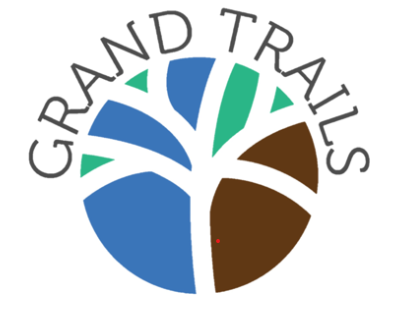Paddle the Grand River
in Waterloo Region
10 — 12 Hours paddling
There is excellent paddling through Waterloo Region as the river gets wider and deeper. This route has been divided into 2 sections: West Montrose to Bridgeport (4½-5 hours) and Bridgeport to Cambridge (6-7 hours). There are 2 dams which must be portaged on the Bridgeport to Cambridge section
Be prepared to get out and tow your craft through the occasional shoal, especially on the first section. Watch out for osprey and great blue herons fishing in the river and turtles sunning themselves on the rocks.
Canoeing the Grand offers canoe, kayak and tube rentals, as well as a shuttle service, throughout Waterloo Region. Grand Experiences offers learn-to-paddle instruction and canoeing, kayaking, tubing, rafting and biking trips, out of Bingemans Campground in Kitchener.
Always consult the GRCA website for up-to-date safety information and river flows.
Grand River Access Points Between West Montrose and Bridgeport
Navigating Shallows in the Grand River in Waterloo
West Montrose to Bridgeport
4½ — 5 hours paddling
Start your paddling trip at the West Montrose Family Campground, which offers parking (fee applies) and a canoe access point. Shortly after setting out, the Grand River passes under the West Montrose Covered Bridge, Ontario’s last remaining covered bridge. From here the river flows through Mennonite farm country, through fields of corn and cattle, and maple syrup woodlots. You may see buggies on the roads crossing the river and horse-drawn farm equipment.
There is an access point on Sawmill Rd just east of the village of Conestogo, on the L bank of the river, just after the confluence of the Grand and one of its larger tributaries, the Conestogo River. There is limited parking by the side of the road and a trail down to the river, under the hydro lines. From here, the Grand flows in a wide circle around the Grey Silo Golf Course. Watch out for errant golf balls!
The next access point is on the R bank at Kaufman Flats, on the east side of the city of Waterloo. There is ample parking here and easy access to the river. This is also the trail-head for the Claude Dubrick Trailway, a short trail running beside the river. Before bridges were built across the Grand River, people would ford the shallows at Kaufman Flats, allowing farmers to bring their grain to Erb’s Mill in Waterloo and to buy supplies. The river is rocky and shallow as you negotiate the remains of the ford and a small weir. Keep to the R through this area where the water is deeper. The Grand takes another wide circle around Kiwanis Park, where there is a river access point on the R, with free parking, a lake-like outdoor pool and a playground. After flowing around the rest of Kiwanis Park and natural wooded areas, watch out for the historic bowstring bridge over the river. The access point at Bridgeport is on the L bank of the river just beyond the bridge. There is a ramp up to Joe Thompson Park (free parking) at the top of the flood protection dyke.
Grand River Access Points between Bridgeport and Cambridge
Approaching the Bridgeport Bowstring Bridge
Bridgeport to Cambridge
6 — 7 hours paddling
This section of the river begins at the Bridgeport access point on the L bank of the river, just below the Bridgeport Bridge. Park at Joe Thompson Park (free parking). Carry your craft down the ramp from the top of the flood protection dyke. From here, river is generally deeper and more free flowing, except late in the season. Initially there are steep banks on the R side of the river, until you approach Bingemans Campground. The access point is on your right, after you pass trailers parked along the river. Grand Experiences offers instructional packages and canoeing, kayaking, tubing, rafting and biking trips from the campground.
The next access point is at the Stanley Park Natural Area (free parking), just before the Victoria St bridge. Explore the trails around the restored quarry ponds in the park and look for turtles and water birds. After you pass under the bridge, look for the osprey family nesting on a pole high above busy Victoria St, on the L side of the river. Shortly afterwards, you pass under a railway bridge. The city of Kitchener has expanded to the edge of the Grand River floodplain, but the Walter Bean Grand River Trail runs through a park along the banks. There are 2 river access points on the R bank along the Walter Bean Trail: the Otterbein Kayak Launch and, after Fairway Rd, the Woolner Trail Boat Launch (both of which have free parking and access to the trails).
Continue paddling past parkland and woods until the Freeport Railway Bridge, immediately followed by the Freeport Bridge, another historic bowstring bridge. Immediately after the bridge, there is a canoe access point on the R with ample parking. Pull out here to avoid the Mannheim Weir portage. Canoeing the Grand has their headquarters and their access point on the other side of the river. The Walter Bean Trail crosses the bridge and continues on the L bank.
Both the Grand River and Walter Bean Trail pass under the Hwy 8 bridge. Immediately after the bridge, look out for warning signs and safety buoys for the Mannheim Weir, which must be portaged. Pull out on the L bank and follow the portage to below the dam. Continue downstream past the golf course. Note the Waterloo Memorial Pioneer Tower on the L bank. The river flows under the Pioneer Tower Pedestrian Bridge and past another golf course, before passing under the Highway 401 bridge. Listen to the trucks thundering overhead. You are now in the city of Cambridge.
Moyer’s Landing Access Point (free parking) is on the L bank, just after Blair Rd. The Grand River now flows through a wide floodplain, joined on the L by its major tributary, the Speed River. The rare ECO centre, is on the R bank, in a network of nature trails. The centre offers numerous research and educational programmes.
Just before the railway bridge, look for the imposing building of Galt Collegiate Institute high on the banks to the L of the river. Immediately after the railway bridge you must pull out on the R bank at Riverbluffs Park and portage the Parkhill Dam. Follow the paved trail to George St (free parking in the lot at the corner) and cross Parkhill Dr at the lights. Turn L towards the bridge and follow the trail on the R, just before the bridge, back down to the river. The portage is 0.7 km long, so most people end their trip here. However, if you continue, the river flows through the old historic town of Galt, with its characteristic limestone buildings, which back onto the river. There are several bridges, so watch out for their piers. If you have time, take the Walking Tour of Historic Galt, which begins at the corner of George St and Parkhill Dr, and learn more about its history.
Most paddlers resume their trip at the river access point on the L side of the Grand River at trail-head of the Cambridge to Paris Rail Trail, which has free parking. To continue downstream, follow our Guide to Paddling Through Paris and Brantford.
The Grand River as it Flows Through the Historic Centre of Galt








